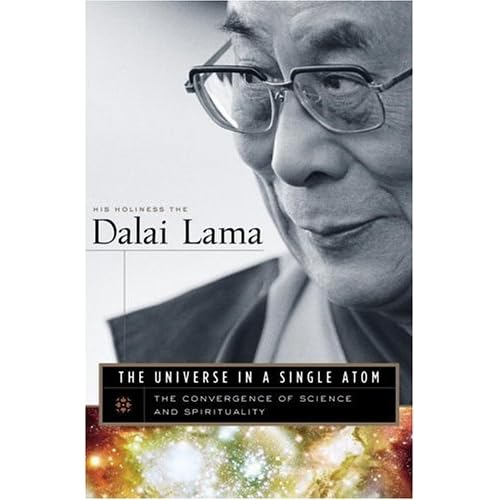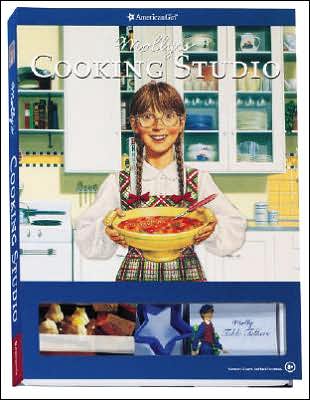Dalai Lama attains icon statusSunday, October 7, 2007
By EVELYN SHIH
STAFF WRITER

He has published a steady stream of books on his life and thoughts beginning in the late 1990s. He has photo ops with Richard Gere. He's drawn a crowd of up to 36,000 at the Rutgers University football stadium.
[His Holiness filled Central Park in 2003. Courtesy of northjersey.com.]
Friday through next Sunday, he takes over Radio City Music Hall for five appearances.
He is His Holiness the Dalai Lama, born Lhamo Thondup, the exiled religious and political leader of Tibet and face of Buddhism in the West. The 1989 Nobel Peace Prize winner has become one of the world's most recognizable icons, with his red and yellow robes, shaved head and wizened eyes twinkling behind a pair of glasses.
Not only is he known as an inspirational figure and a leader in behalf of world peace, but, in recent years, he has also become credibly -- or incredibly -- cool. The Dalai Lama's famous face is encroaching on space normally reserved for the iconic likes of Che Guevara and Albert Einstein – and popping up on everything from tote bags to notebooks to boxer shorts.
"I feel like it's a tribute to him as a person," said Kevin McCormick of Princeton, who has designed a Dalai Lama T-shirt available on the Internet. His design riffs off the black and white sharp relief style of the ubiquitous Che shirts by having His Holiness holding two fingers up in the peace sign. "Instead of showing a leader of revolt, I wanted to show someone who I see as a leader of peace. ... With a Che shirt, you can offend a lot of people."
In the media spotlight
McCormick, who is not a Buddhist, created the T-shirt after reading "The Universe in a Single Atom," a book by the Dalai Lama. The 30-year-old may seem an unlikely fanboy for the 72-year-old Tibetan leader, but he's not alone. The 14th Dalai Lama dominated the New York Times bestseller list for several weeks with "The Art of Happiness" (1998), which ended up selling 730,000 copies. The success of books like 2006's "How to See Yourself as You Really Are" continues to prove his popularity, and DVDs like "Ten Questions for the Dalai Lama," coming out Oct. 23, also keep him in the media spotlight.
Although the Dalai Lama is a religious and spiritual beacon, his image seems to cut across the lines of faith and nationality. Where figures like mega-church pastor Joel Osteen might divide the public into believers and non-believers, the Dalai Lama's message is inclusive, said Mara Einstein, author of the new book "The Branding of Faith," which examines the marketing of different religions.
"He is a consistent face of peace in the world," she said. The New Age movement of the '60s and '70s championed Buddhism and Hinduism as alternative world views, and though that movement may have become outdated, said Einstein, the Dalai Lama still carries on his mission of spreading tolerance and non-violence. His reach extends far beyond Tibet, just as the influence of popular Pope John Paul II (an icon who graced T-shirts himself) traveled far beyond the Vatican.
She said that when people wear the Dalai Lama's face across their chests, it's an act of identity creation. "Whether you're wearing a Yankees baseball cap or a Dalai Lama T-shirt, you are communicating to people, 'This is who I am,' " she said.
Inspired individuals like McCormick, who is a freelance Web and T-shirt designer, create their own Dalai Lama merchandise, as do Web sites like "The Zen Shop" at e-sangha.com. The proceeds may not go directly to the Tibetan cause, but the spontaneous proliferation of His Holiness' image indicates its currency.
"Talk about branding," said Einstein. "He's probably got the best brand of any faith. It would be across-the-board positive" to have his image associated with products, people and events, she added.
While there are many people who have done good things in the world and received Nobel Peace Prizes, they "may be less appropriate to put on a T-shirt because they haven't achieved that iconic status that people can relate to just by seeing an image of them," McCormick said.
A further plus: Identifying with the Dalai Lama is something almost completely non-controversial. How could anyone disagree with peace? And unlike most religions, Buddhism has a reputation for being non-proselytizing and open to other faiths, said Einstein. There is less pressure than there may be in other faiths to convert and commit to a whole set of beliefs.
'Ah ha!' momentBut perhaps the real reason the Dalai Lama has such reach in the West is his charisma.
Diane Hatz, a follower of His Holiness for almost 10 years, felt his "unconditional love" from the nosebleed seats of an auditorium where she heard him speak for the first time. It was 1998, and she was on a trip to Washington, D.C. She decided on a whim to see him speak because he is a "historical figure, like Gandhi or Nelson Mandela."
At first she was irritated because she couldn't understand his words through his accent. But her "Ah ha!" moment came when he prostrated himself at the end of the talk in a ceremonial bow.
"He touched his forehead to the floor, and when it hit the floor, it was like this light pierced me in the heart," she said. As soon as she got back home to New York, she began looking for a Tibetan Buddhist spiritual teacher. She eventually ended up with Lama Pema Wangdak at the Palden Sakya Center in New York, where North Jersey Tibetan Buddhists like executive secretary Michele Sakow also practice.
And she will most definitely be at Radio City Music Hall, hanging on his words. Like die-hard sports fans and rock band groupies, Hatz travels to as many of the Dalai Lama's events as she can. She will be going to Indiana and India this year, and Bethlehem, Pa., next July.
"This is what I do," said Hatz. Buddhism informs every part of her life.
Never underestimate the power of an image, she added. "I know people who have only seen his photo and become totally interested in Buddhism," she said.
While most merchandise carrying his image is all in good fun, who knows: Maybe sporting "Dalai Lama Is My Om Boy" on a spaghetti-strap tank top will inspire some epiphanies -- or even enlightenment.
E-mail: shih@northjersey.com
* * *
 A Dalai Lama primer• Ancient lineage:
A Dalai Lama primer• Ancient lineage: The man known as the Dalai Lama is believed to be the 14th in a line of reincarnations. Tibetans believe that his soul is that of a bodhisattva, or enlightened being. The Dalai Lama has been both the spiritual and political leader of Tibet since the 17th century.
• What's in a name? The Dalai Lama was born Lhamo Thondup in 1935 in Amdo, Tibet. He was recognized as the next Dalai Lama at the age of 2, given the name Tenzin Gyatso and crowned the leader of Tibet at 15.
• Exiled: In 1959, the 14th Dalai Lama was forced to flee to India because of increasingly dangerous pressures from the People's Republic of China. He set up a government in exile in Dharamsala, India.
• Recognition: For his efforts to bridge gaps with other religious and state leaders and his continued dedication to peace, the 14th Dalai Lama was awarded the Nobel Peace Prize in 1989.
• Continued oppression: Last month, laws went into effect in the People's Republic of China mandating that the next reincarnation of the Dalai Lama be chosen by the Chinese government. Observers say this is a transparent attempt to limit the Tibetan leader's influence over his nation. The current Dalai Lama has vowed not to reincarnate in a China-controlled Tibet.
* * *
 Other familiar facesChe Guevara --
Other familiar facesChe Guevara -- Born Ernesto Guevara de la Serna, "Che" became an icon of socialist revolution in South America. His radical Marxist ideas and perceived martyrdom made him a popular symbol in American counterculture -- and a fixture on red T-shirts.
Albert Einstein -- The scientist who theorized relativity and the space-time continuum became America's quintessential mad scientist with his wild hair and crazy tongue flip. He received a Nobel Prize in physics in 1921.
Mohandas Gandhi -- A spiritual and political leader of India, Gandhi's name has become synonymous with non-violence. He led civil rights struggles in South Africa and worked for Indian independence from Britain.
Copyright © 2007 North Jersey Media Group Inc.
 The autumn and winter holidays bring vegetarians and carnivores together at the same table every year. Unless the entire family (and extended family) is vegetarian, the main dish will probably always include some sort of meat. But for vegetarian cooks -- and cooks who anticipate serving vegetarians at their holiday table -- there are plenty of options in the "Pasta, Vegetables and Side Dishes" section of this book. There is also a section on soups and salads and breakfast and brunch. But for hearty holiday chow, check out recipes like the noodle kugel below.
The autumn and winter holidays bring vegetarians and carnivores together at the same table every year. Unless the entire family (and extended family) is vegetarian, the main dish will probably always include some sort of meat. But for vegetarian cooks -- and cooks who anticipate serving vegetarians at their holiday table -- there are plenty of options in the "Pasta, Vegetables and Side Dishes" section of this book. There is also a section on soups and salads and breakfast and brunch. But for hearty holiday chow, check out recipes like the noodle kugel below.



















